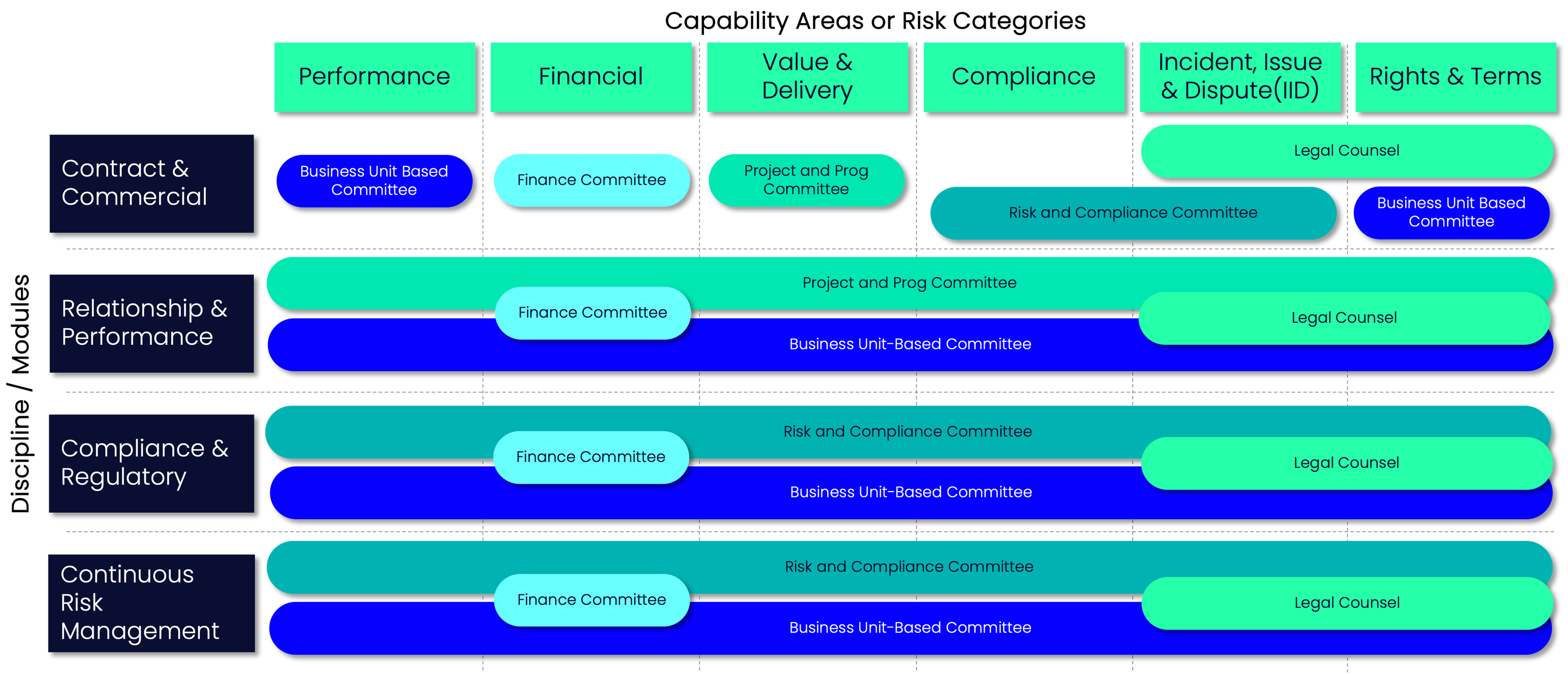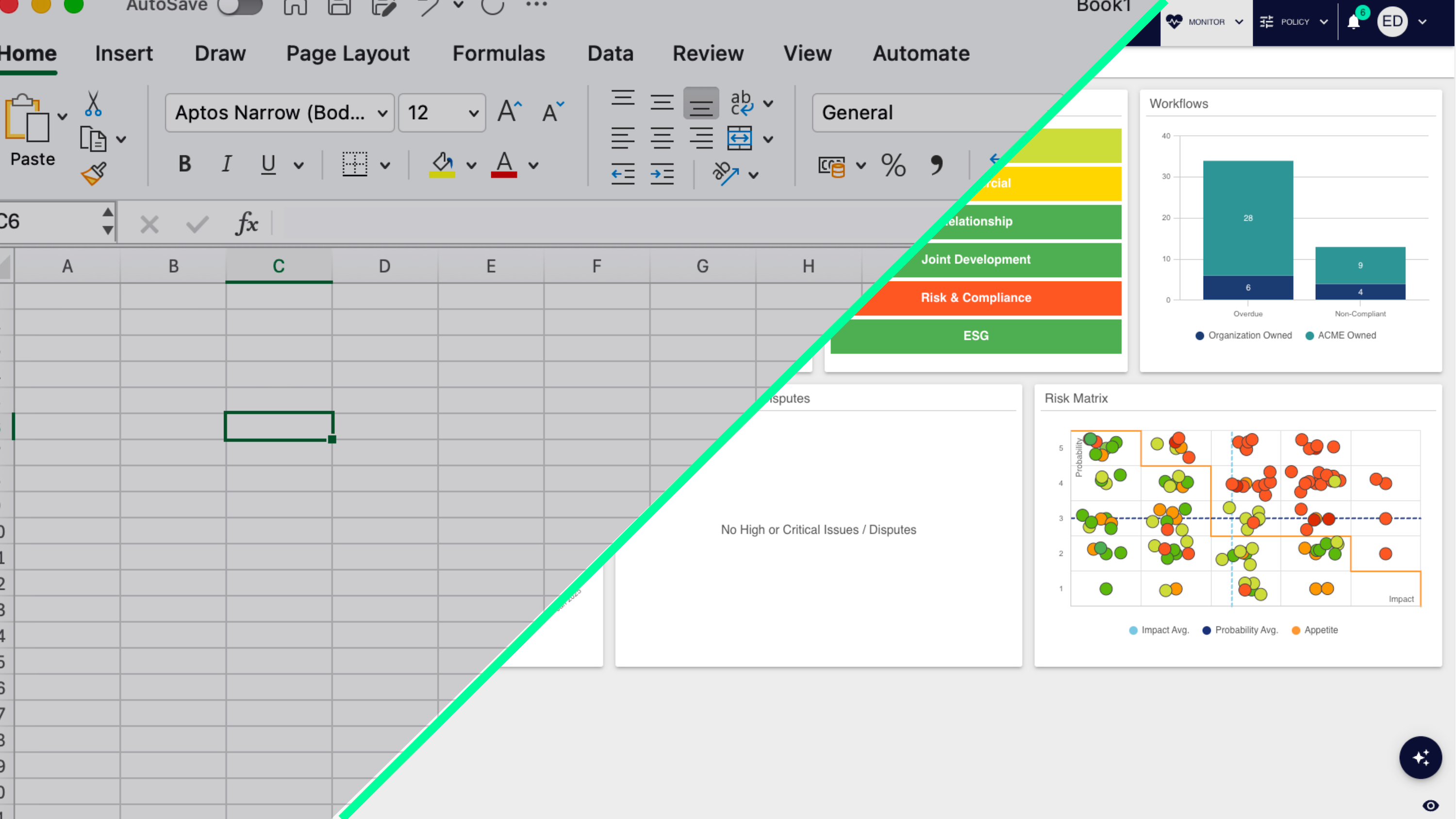Effective risk management is essential for organisations to safeguard their interests, protect their reputation, and ensure long-term sustainability. To be successful within Enterprise Risk Management, Boards and Committees are required to oversee risk management practices and decision-making processes, making them a critical role within the framework.
It is important to understand the function and interactions of these governing bodies, from their role within Enterprise Risk Management, and the process they take to evaluate and implement a successful strategy.
Boards and Committees in Enterprise Risk Management:In a previous blog, we analysed ‘The Three Lines of Defence Model’; a framework that outlines the roles and responsibilities within a company to ensure effective risk management of third parties. Within this framework, it includes the boards and committees, that serve as decision-making authorities. Their role is to provide oversight in specific areas of risk, aligning with different capability areas or risk categories within the enterprise.

Alignment with Capability Areas and Risk Categories:
Boards and committees are typically structured to align with specific capability areas or risk categories relevant to the business’s operations. For example, committees may focus on contracts and commercial management, relationship or performance management, compliance and regulatory adherence, or continuous risk management. Each committee is tasked with reviewing and opining on matters within its purview, ensuring alignment with the company’s objectives and risk tolerance.
Terms of Reference:
To orchestrate their activities, committees operate based on predefined terms of reference. These terms outline the composition of the committee, including the chairperson, secretary, and standing members, along with their respective roles and responsibilities. Additionally, terms of reference specify the scope of the committee’s authority, the frequency of meetings, and the reporting mechanisms to higher governance bodies.
Interaction with Third-Party Risk Management Function:Within this governance framework, the TPRM function occupies a critical position. It interfaces with various boards and committees to ensure the effective management of third-party risks. TPRM functions are responsible for assessing and mitigating risks associated with external vendors, suppliers, and service providers, thereby safeguarding the organisation against potential vulnerabilities and compliance breaches.
4 Considerations for TPRM Interaction:
For TPRM functions to effectively interact with boards and committees, several key considerations must be addressed, here are the top 4 essential factors to consider
- Clear Communication Channels: Establishing clear lines of communication between the TPRM function and relevant boards or committees is essential to ensure timely reporting and decision-making.
- Alignment of Objectives: Your TPRM objectives should align with the strategic goals and risk appetite of the wider organisation, as articulated by the governing bodies.
- Transparent Reporting: TPRM functions should provide transparent and comprehensive reports to boards and committees, highlighting key risk exposures, mitigation strategies, and compliance efforts.
- Proactive Risk Management: TPRM functions should adopt a proactive approach to risk management, anticipating emerging threats and collaborating with governance bodies to address them effectively.
Conclusion:
In conclusion, understanding the roles and functions of boards and committees within the enterprise risk management framework is essential for effective governance and decision-making. By aligning with these governing bodies and proactively engaging with them, TPRM functions can enhance their effectiveness in managing third-party risks and contribute to the overall resilience and success of the business.
Download our TPRM Whitepaper
For an in-depth exploration of Third-Party Risk Management, download our comprehensive whitepaper. It covers the necessity, key components, and actionable steps for implementing robust TPRM frameworks. Learn how to align strategies with corporate objectives, establish effective governance, and mitigate risks to ensure long-term success.


